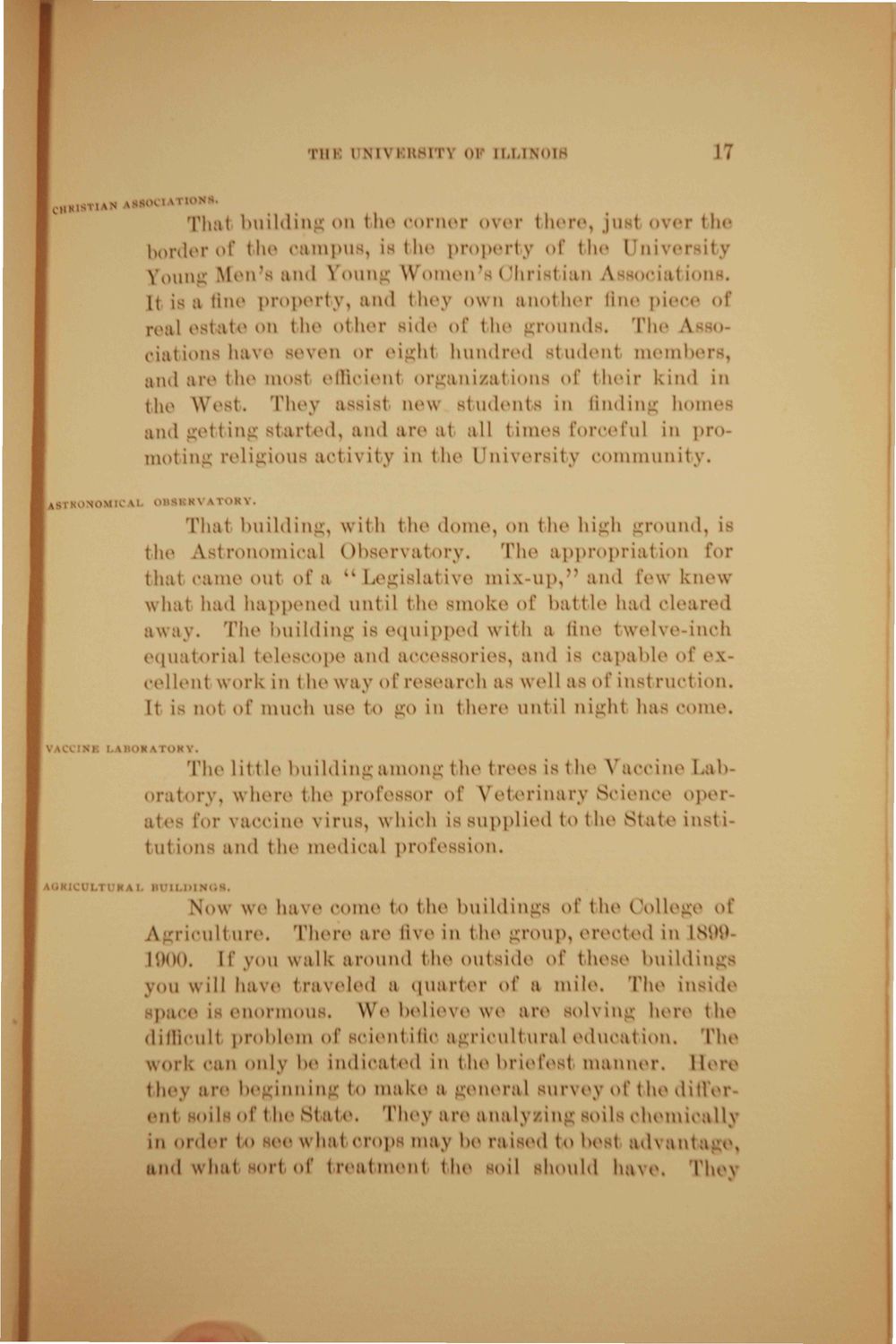Caption: Book - Overview and State of the University (1913)
This is a reduced-resolution page image for fast online browsing.

EXTRACTED TEXT FROM PAGE:
THK I N I \ KHS1 l'\ ol ILLINOIS IT C«»«TU* I ClATIOHi, Thai building en the corner over there, ju i over tho border of the campus, is the property of the Univ< i ity ¥bung MoiTs and foun Women's Ohi tian A looiations. It is a fine property, and thej own another fine piece of real estate on the other side of the grounds. Th< \ •»oiations have seven or eight hundred student members, and are the most efficient or ionizations of their kind in the W it. They assist new students in finding home and tting start and are at all times forceful in promoting religious activity in the University community. tSTROftOM U • HUN kTORY. That building, with the dome, on the high ground, is the Astronomical Observatory. The appropriation foi u that came ou1 of a Legislative mix-up/'and few knew what had happened until the smoke of battle had cl trod away. The building is equipped with a fine twelve-inch equatorial telescope and accessories, and is capable of excellent work in the way of research as well as of instruction. It is not of m u c h use to *o in t h e r e u n t i l night has c o m e . •K Y . The little building among the trees is the Vaccine Laboratory, where the professor of Veterinary Science operates f«»r vaccine virus, which is supplied to the State instit lit ions i ml t he m e d i c a l profession. KIC KA: Now we have come to t In* buildings o( the College ot Agriculture . There are five in tin* group, erected in 18W 1000. II' you walk around the outside o( thei buildings you will have traveled a quarter ^( a mile, The insid< i re is enormous. We believe we an* Bolving hen* the difficult problem of scientific agricultural education. Tin work can only be indicated in the briefest manner. Here the\ are beginning to make a general survey of the differ ent soils of the Stat* . Thej ire analyzing soils chemically in order to 8( what crops may be raised to 1 t ad van t a e, and what ortof treatment the soil should have, The) 1
|